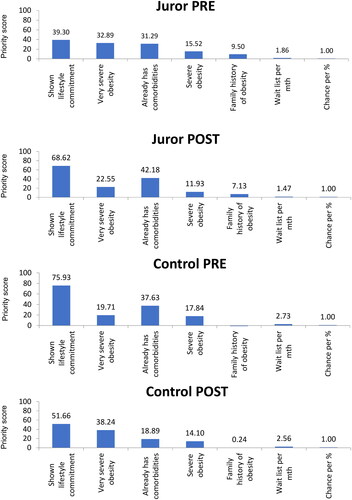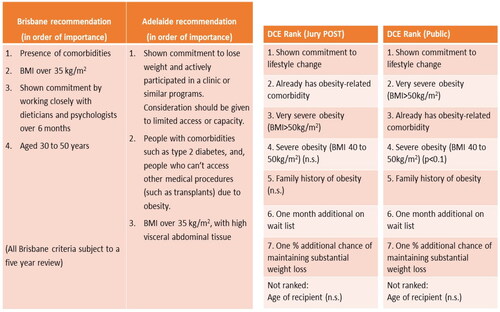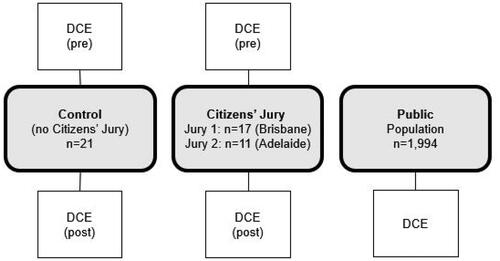Figures & data
Table 1. Summary of approach to addressing the research objectives and related hypotheses, and summary of findings (last column).
Table 2. Characteristics of participants in the two jury, control and public samples.
Figure 2. Priority weights for the juror and control samples, pre and post CJ deliberations (attributes are presented on the horizontal axis; possible priority scores range from 0 to 100 on the vertical axis).
Chance per % represents the priority score associated with a 1% increase in the chance of maintaining a substantial (at least half) reduction in excess weight.

Table 3. Rank order of priorities for juror and control DCE, pre and post.
Figure 3. Comparison of the Jury recommendations and the DCE ranks for the jury post and public samples.
For the DCE, the attribute levels were significantly associated with the choices the respondents made at the 5% level (p < .05) with the exception of severe obesity and family history of obesity (which was only significant at the 10% level in some models, p < .1) and age of the recipient, which was not significantly associated with choice (n.s. p > .1).


